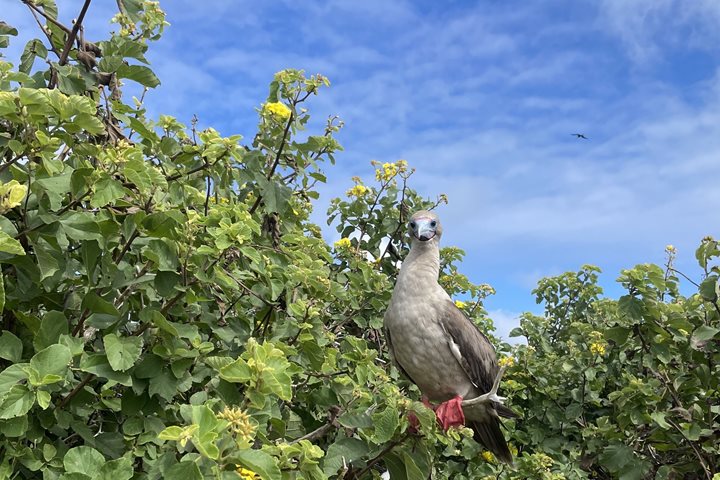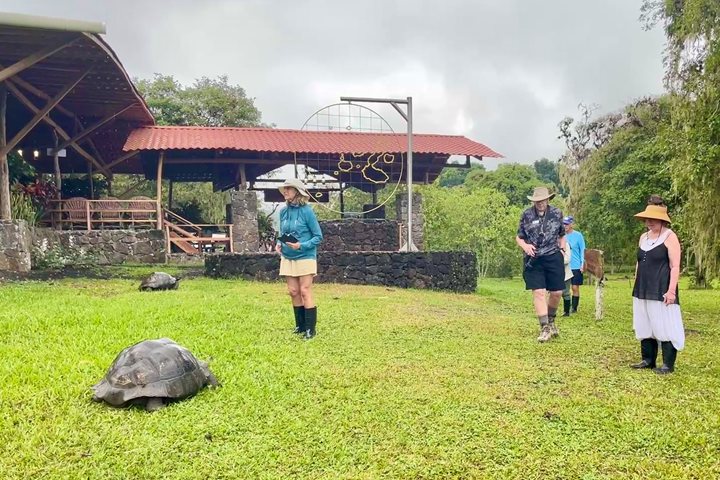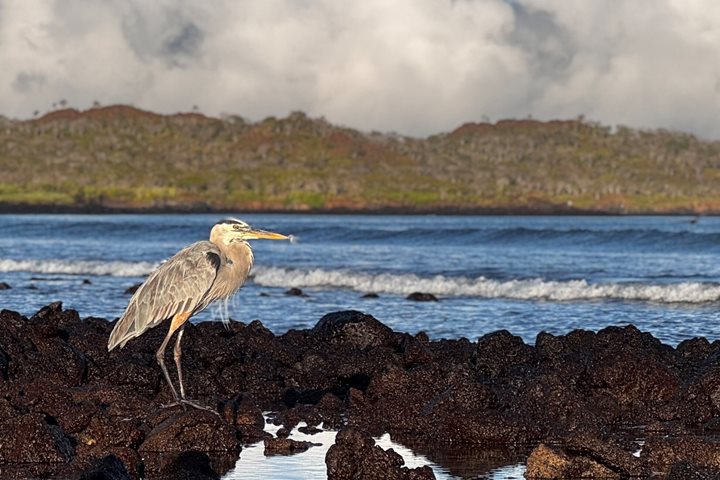Probably the most striking region of the Galapagos Archipelago is the west, which comprises Isabela and Fernandina Islands. These are the youngest islands, both of which have experienced volcanic eruptions in the last twelve months. The Cromwell Undercurrent upwells here, bringing nutrients from the depths of the Pacific Ocean; these constant upwellings make this a highly productive area, with various endemic species of the Galapagos benefitting from it.
5/29/2025
Read
National Geographic Gemini
Genovesa Island
Genovesa is considered one of the Galapagos crown jewels, and today it was showing off all of its splendor. Immediately after breakfast we put on our sturdy shoes and set out to explore Prince Philip’s Steps. This area is known for opportunities to observe not only large colonies of nesting Nazca and red-footed boobies, but maybe, just maybe, the short-eared owl which exhibits diurnal behavior on this island. After this walk we got ready for a dip in the Pacific Ocean and snorkeling along the inner coast of this caldera. The afternoon was equally amazing as we disembarked to explore Darwin Bay, along a short and easy trail that was packed with wildlife. Here we observed not only nesting frigatebirds, red-footed boobies, and Nazca boobies, but also a few yellow-crowned night herons. It was another incredible afternoon in the Galapagos Islands.







